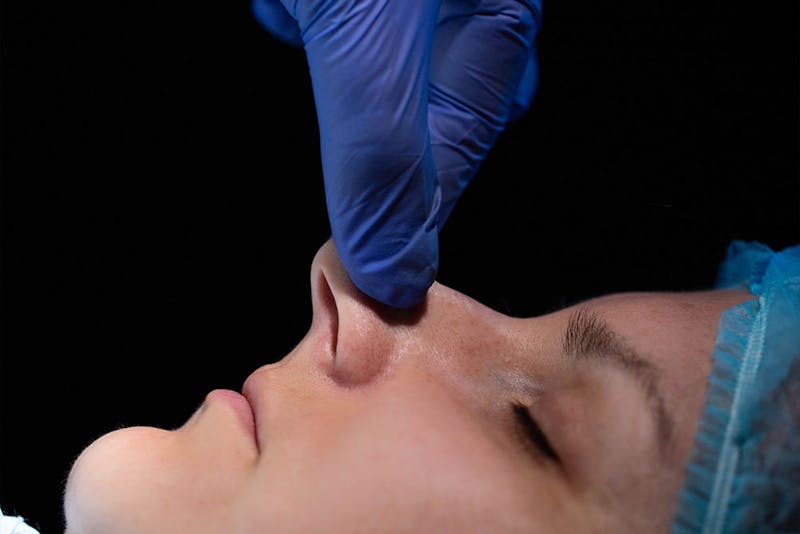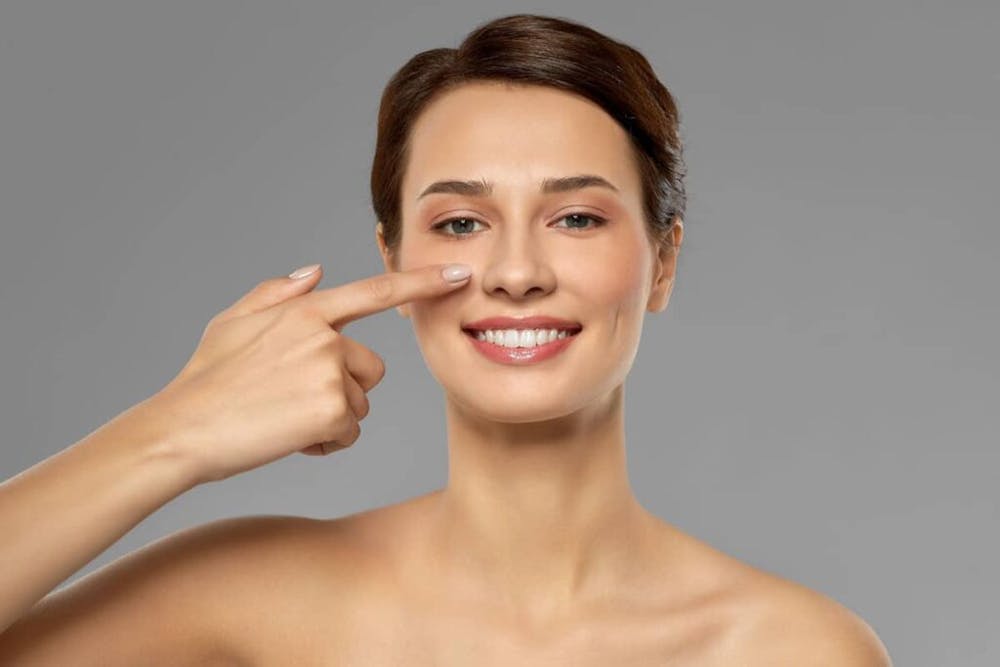
Posted by Dr. Anil R. Shah
Understanding the Basics of Nasal Surgeries
Nasal surgeries, commonly known as nose jobs, encompass a range of surgical procedures aimed at addressing both functional and aesthetic concerns. Among these, septoplasty and rhinoplasty are two prominent types of nasal surgeries. Each targets different aspects of the nasal structure and serves distinct purposes. Septoplasty procedures primarily focus on correcting structural issues within the nasal passage, particularly involving the nasal septum. Rhinoplasty, on the other hand, is generally considered a cosmetic procedure aiming to enhance the facial features by altering the external appearance of the nose.
Differences Between Septoplasty and Rhinoplasty
Septoplasty: Purpose and Procedure
Septoplasty is a surgical treatment specifically designed to address problems related to the nasal septum, the partition between the two nasal cavities. This procedure is often recommended for patients suffering from nasal obstruction caused by a deviated or crooked septum. In septoplasty surgeries, Dr. Anil Shah, a skilled surgeon, realigns the nasal septum, clearing the nasal passage and alleviating breathing difficulties. This operation primarily addresses functional concerns and does not typically alter the outward appearance of the nose.
Rhinoplasty: Aesthetic Goals and Techniques
Rhinoplasty, frequently referred to as a nose job, is a cosmetic surgery aimed at improving the aesthetic appearance of the nose. This procedure can address a variety of cosmetic issues, such as a prominent nasal hump, a bulbous nasal tip, or nasal asymmetry. Dr. Anil Shah, an expert in rhinoplasty, customizes the procedure based on the patient’s aesthetic preferences, ensuring a harmonious balance with other facial features. Rhinoplasty can involve modifying the nasal bone, nasal cartilage, and other nasal tissues to achieve the desired aesthetic result.
The Functional Benefits of Septoplasty
Septoplasty is renowned for significantly enhancing nasal function, primarily for individuals suffering from nasal blockage due to structural defects like a deviated septum. This surgical procedure, expertly performed by Dr. Anil Shah, straightens the nasal septum, leading to improved airflow through the nasal passage. Patients often experience a notable reduction in breathing difficulties, chronic sinus infections, and overall nasal discomfort. Furthermore, septoplasty can alleviate symptoms associated with conditions like sleep apnea, contributing to better sleep quality and general health. The improvement in breathing efficiency and air passage not only enhances the patient’s quality of life but also can have a positive impact on their energy levels and daily activities.
The Aesthetic Advantages of Rhinoplasty
Rhinoplasty, beyond its role as a cosmetic procedure, plays a pivotal role in facial harmony and self-esteem. Dr. Anil Shah’s expertise in rhinoplasty enables patients to achieve their desired aesthetic appearance, whether it’s correcting a crooked nose, reducing a nasal hump, or refining the nasal tip. This surgical intervention can dramatically enhance facial symmetry and proportion, aligning the nose harmoniously with other facial features. For many, the changes brought about by rhinoplasty go beyond mere physical appearance; they bring about a significant boost in confidence and self-perception. The ability to alter one’s prominent features to better reflect their self-identity can be a profoundly transformative experience, both emotionally and psychologically.
Drawbacks and Risks of Septoplasty
Despite the benefits of septoplasty, it’s essential to consider its potential drawbacks and risks. While generally a safe procedure, septoplasty carries the usual surgical risks of infection, bleeding, and adverse reactions to anesthesia. Additionally, there’s a risk of a septal perforation, which can cause chronic nasal symptoms. Postoperative recovery may involve temporary discomfort, swelling, and the possibility of nasal splints to maintain the septum’s new position. In rare cases, patients may not experience a significant improvement in breathing or might require revision surgery for further adjustments. Dr. Anil Shah ensures that all patients are fully informed about these risks and the realistic outcomes of the surgery, enabling them to make informed decisions about their treatment.
Drawbacks and Risks of Rhinoplasty
Rhinoplasty, while effective in altering the nose’s external shape for aesthetic reasons, comes with its set of risks and potential complications. Common risks associated with rhinoplasty include bleeding, infection, and reactions to anesthesia, similar to other surgical procedures. There’s also the risk of dissatisfaction with the cosmetic outcome, which might necessitate revision surgeries. Postoperative swelling and bruising are typical and can affect the patient’s day-to-day activities for several weeks. In some cases, patients might experience long-term numbness or a change in nasal sensation. Dr. Anil Shah emphasizes the importance of setting realistic expectations and provides comprehensive postoperative care instructions to mitigate these risks and ensure the best possible outcomes.
Choosing Between Septoplasty and Rhinoplasty
When deciding between septoplasty and rhinoplasty, several factors come into play. These include:
- The primary concern: functional issues like breathing difficulties lean towards septoplasty, while cosmetic reasons favor rhinoplasty.
- The patient’s medical history, including any previous nasal surgeries or chronic conditions.
- Personal goals and expectations regarding the surgery’s outcome.
Combining Septoplasty and Rhinoplasty: A Comprehensive Approach
In some cases, combining septoplasty and rhinoplasty offers a comprehensive solution. This approach is suitable for patients who:
- Suffer from both structural defects and desire cosmetic improvements.
- Wish to address both functional and aesthetic aspects in a single surgery.
Preparing for Septoplasty or Rhinoplasty
Proper preparation is essential for a successful septoplasty or rhinoplasty. Dr. Anil Shah advises patients to:
- Undergo a thorough evaluation to determine their candidacy for nose surgery.
- Discuss their expectations, concerns, and potential risks with the surgeon.
- Follow pre-operative instructions carefully to ensure optimal outcomes.
Recovery and Aftercare: Septoplasty vs. Rhinoplasty
The recovery process for nasal surgeries varies significantly between septoplasty and rhinoplasty:
- Septoplasty Recovery: Typically involves minimal downtime. Patients can expect some swelling and discomfort, but these symptoms usually subside within a few days. The use of nasal splints may be necessary to support the newly aligned septum during healing.
- Rhinoplasty Recovery: Recovery times for rhinoplasty surgeries are generally longer, given the complexity of the surgery. Swelling and bruising around the eyes and nose are common, and it may take several weeks to months for the final shape of the nose to settle. Adhering to postoperative guidelines is crucial for ensuring a smooth recovery and optimal results.

In conclusion, while septoplasty and rhinoplasty cater to different needs – one addressing functional concerns and the other focusing on aesthetic enhancements – both play a significant role in improving an individual’s quality of life. Whether you are a candidate for rhinoplasty or septoplasty or considering a combination of both, it’s essential to consult with an experienced surgeon like Dr. Anil Shah, who can provide a comprehensive assessment and tailor a treatment plan to meet your specific needs.
Frequently Asked Questions About Septoplasty and Rhinoplasty
What is the primary difference between septoplasty and rhinoplasty?The primary difference lies in their objectives and techniques. Septoplasty is a functional procedure focused on correcting internal structural issues within the nasal cavity, primarily aimed at improving breathing and addressing nasal blockage. Rhinoplasty, conversely, is a cosmetic procedure designed to alter the external shape of the nose, enhancing the facial appearance and addressing concerns like a crooked nose or nasal hump.
Can both surgeries be performed together?Yes, these two procedures can be combined in a single operation. This is often recommended for patients who have both functional and aesthetic concerns. Combining surgeries can address nasal blockage and structural defects while simultaneously enhancing the nose’s outward appearance.
How long is the recovery period for each procedure?The recovery period varies. For septoplasty, most patients resume normal activities within a week, though full healing may take several weeks. Rhinoplasty recovery is more extended, with initial swelling subsiding in a few weeks, but it can take up to a year for the final shape of the nose to be fully refined.
Are the results of rhinoplasty and septoplasty permanent?The results of septoplasty are typically long-lasting, provided there are no additional injuries or structural changes. Rhinoplasty results are also generally permanent, although natural aging processes can slightly alter the nose’s appearance over time.
How do I decide which procedure is right for me?The decision should be based on your specific needs and goals. If you have breathing issues, difficulty breathing, or other functional problems, septoplasty might be a suitable choice. For those looking to improve the aesthetic appearance of their nose, rhinoplasty would be more appropriate. It’s crucial to have a detailed consultation with Dr. Anil Shah to discuss your concerns and develop a personalized treatment plan that aligns with your goals.

